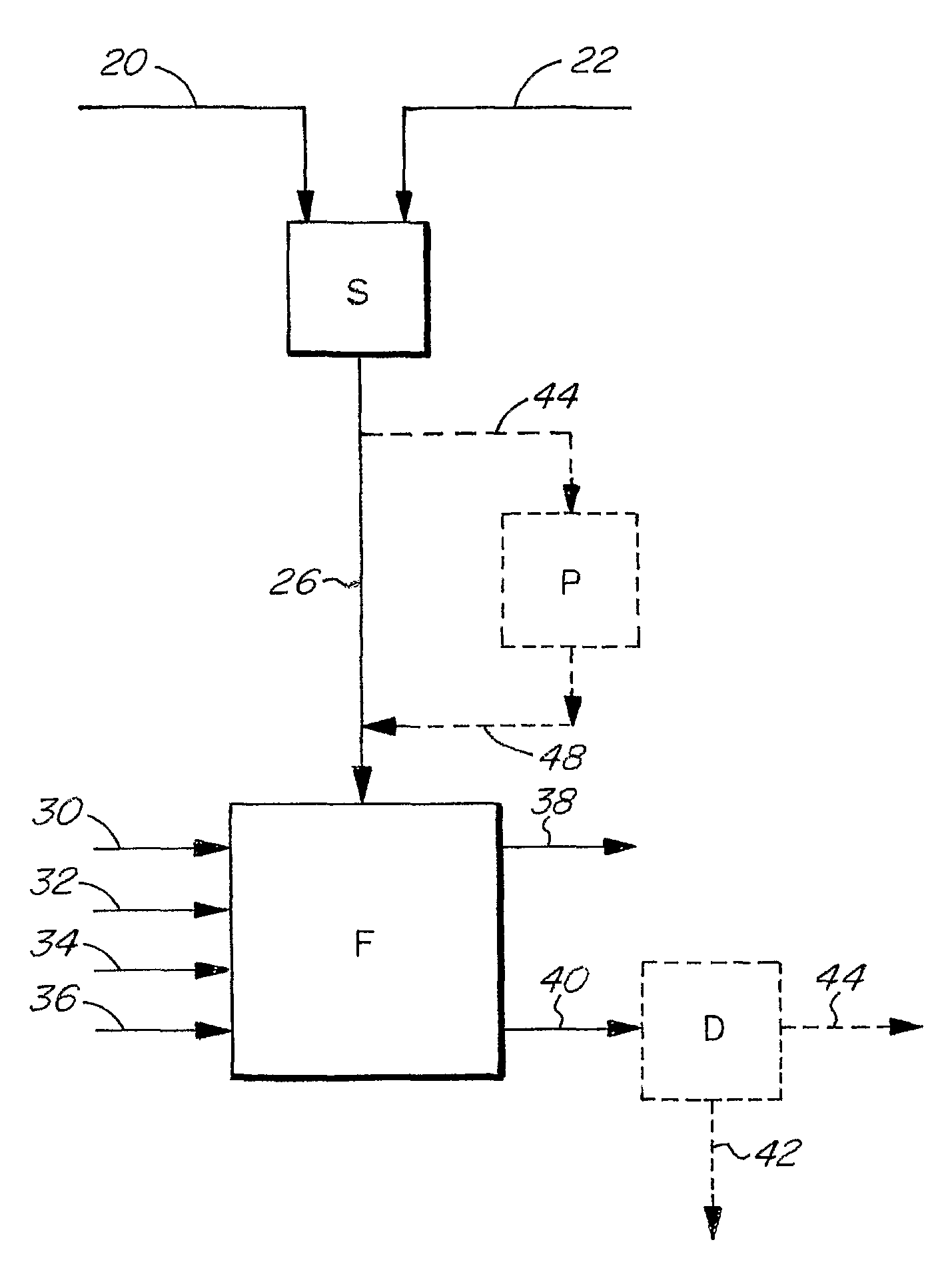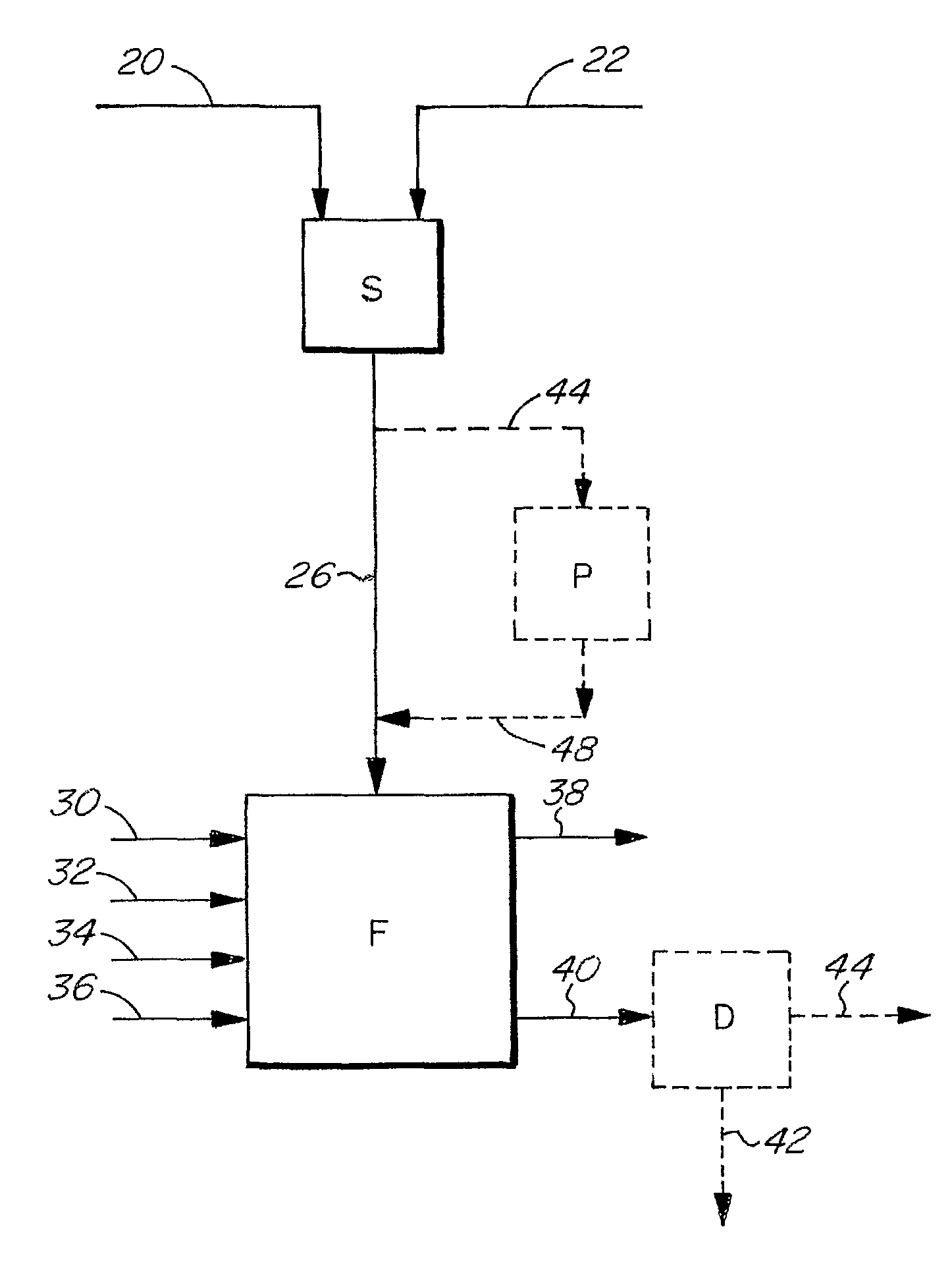Method for upgrading combustion ash
a technology of combustion ash and upgrading method, which is applied in the direction of solid waste management, chemical/physical processes, solid separation, etc., can solve the problems of reducing its acceptance as cement kiln raw materials, and achieve the effects of reducing the mercury content of pozzolanic combustion ash, improving the recovery of mercury-depleted ash from flotation, and further enhancing mercury reduction
- Summary
- Abstract
- Description
- Claims
- Application Information
AI Technical Summary
Benefits of technology
Problems solved by technology
Method used
Image
Examples
example 1
[0024]Samples of bituminous coal fly ash A having 250 parts per billion mercury, 28.6 micron mean particle size and a pH of 8.4 were subjected to froth flotation. The flotation conditions were: 1200 rpm impeller speed; 10 liters per minute aeration flow rate, i.e. 1.09 liters air / liter of pulp / minute; kerosene and tall oil (from pine) as collector, 0.004 grams kerosene per gram fly ash, 0.004 grams tall oil per gram fly ash; 0.002 grams Dowfroth 250-C (1-(1-methoxypropan-2-yloxy)propan-2-ol) per gram of fly ash as frothing agent; 10% pulp density (dry mass of ash / mass of ash slurry); slurry temperature 35° C.; 9.2 L flotation cell; no pH adjustment; 5 minute conditioning period; 20 minute aeration period.
[0025]One sample was not pulverized before froth flotation and other samples were pulverized in batch mode or continuous mode using an acoustic frequency sonicator. After froth flotation, the mean particle size, mercury content and yield of the product mercury-depleted ash slurry we...
example 2
[0029]Samples of bituminous fly ash A as in Example 1 were processed under the same conditions except that the pH of the ash slurry was adjusted to pH 4 by adding 0.0037 grams sulphuric acid per gram fly ash to the flotation cell. The results are shown in Table 2.
[0030]
TABLE 2Batch Flotation Data (Acidified Flotation Slurry)UnpulverizedPulverized—BatchContinuousPulverization time0152.75(seconds)Mean particle size21.09.419.118.2(microns)Mercury Content (ppb)30Yield (Mass %)69.375.169.873.1
[0031]The results demonstrate that acidification of the ash increases the yield of mercury-depleted ash slurry.
example 3
[0032]Raw unsieved class F bituminous coal fly ash B containing 205 ppb mercury and 192 parts per million available ammonia nitrogen was wet pulverized in an acoustic frequency 3 liter sonication chamber for 3 minutes under the following conditions: 8.8 kg of 1.18 mm steel shot pulverization media, 0.6 kg of water, and 0.85 kg of raw bituminous fly ash, resulting in a chamber void volume of 23%.
[0033]The available ammonia nitrogen content after pulverization was 2.67 ppm, thus achieving a 98.6% reduction. The pulverized fly ash was then subjected to wet froth flotation as described in Example 1. There was a further reduction of available ammonia nitrogen to 1.86 ppm, or 99% reduction overall.
PUM
| Property | Measurement | Unit |
|---|---|---|
| diameter | aaaaa | aaaaa |
| mass ratio | aaaaa | aaaaa |
| mass ratio | aaaaa | aaaaa |
Abstract
Description
Claims
Application Information
 Login to View More
Login to View More - R&D
- Intellectual Property
- Life Sciences
- Materials
- Tech Scout
- Unparalleled Data Quality
- Higher Quality Content
- 60% Fewer Hallucinations
Browse by: Latest US Patents, China's latest patents, Technical Efficacy Thesaurus, Application Domain, Technology Topic, Popular Technical Reports.
© 2025 PatSnap. All rights reserved.Legal|Privacy policy|Modern Slavery Act Transparency Statement|Sitemap|About US| Contact US: help@patsnap.com


